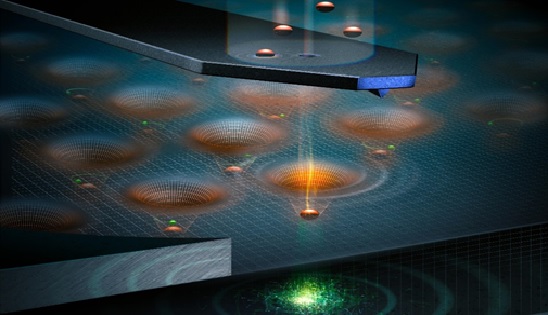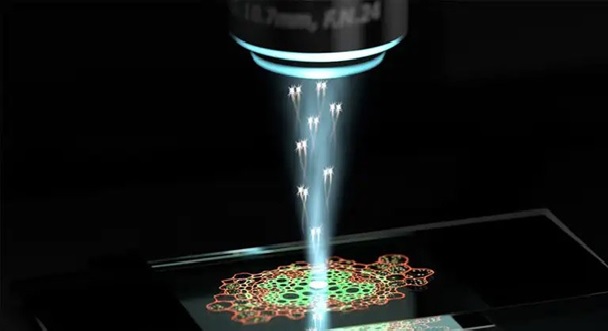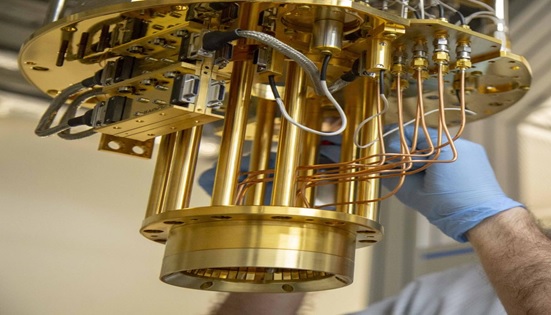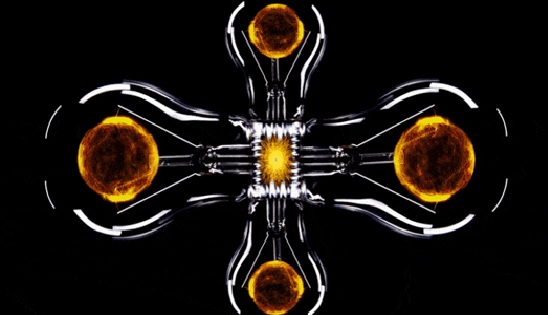Building a Silicon Quantum Computer Chip Atom by Atom
Quantum computers could be constructed cheaply and reliably using a new technique perfected by a University of Melbourne-led team that embeds single atoms in silicon wafers, one-by-one, mirroring methods used to build conventional devices, in a process outlined in an Advanced Materials paper. [1]

Figure 1. Building a Silicon Quantum Computer Chip Atom by Atom
Figure 1 shows the new technique, described in the journal Advanced Materials, can create large-scale patterns of counted atoms that are controlled so their quantum states can be manipulated, coupled and read out. Lead author Professor David Jamieson, from The University of Melbourne, said the team’s vision was to use this technique to build a very, very large-scale quantum device. [4]
We could ‘hear’ the electronic click as each atom dropped into one of 10,000 sites in our prototype device. Our vision is to use this technique to build a very, very large-scale quantum device,” says Professor David Jamieson of The University of Melbourne, lead author of the Advanced Materials paper describing the process.
His co-authors are from UNSW Sydney, Helmholtz-Zentrum Dresden-Rossendorf (HZDR), Leibniz Institute of Surface Engineering (IOM), and RMIT Microscopy and Microanalysis Facility. [2]
The technique takes advantage of the precision of the atomic force microscope, which has a sharp cantilever that “touches” the surface of a chip with a positioning accuracy of just half a nanometre, about the same as the spacing between atoms in a silicon crystal.
The team drilled a tiny hole in this cantilever, so that when it was showered with phosphorus atoms one would occasionally drop through the hole and embed in the silicon substrate.
The key was knowing precisely when one atom – and no more than one – had become embedded in the substrate. Then the cantilever could move to the next precise position on the array.
The team discovered that the kinetic energy of the atom as it plows into the silicon crystal and dissipates its energy by friction can be exploited to make a tiny electronic “click.” [3]
“We have already produced groundbreaking results on single-atom qubits made with this technique, but the new discovery will accelerate our work on large-scale devices,” he said. [4]
References:
- https://minorupdate.in/building-a-silicon-quantum-computer-chip-atom-by-atom/
- https://www.hpcwire.com/off-the-wire/building-a-silicon-quantum-computer-chip-atom-by-atom/
- https://scitechdaily.com/building-a-silicon-quantum-computer-chip-atom-by-atom/
- https://www.electronicsonline.net.au/content/assembly/news/atom-by-atom-building-a-silicon-quantum-computer-chip-207688440
Cite this article:
Thanusri swetha J (2022), Building a Silicon Quantum Computer Chip Atom by Atom, AnaTechMaz, pp.27















